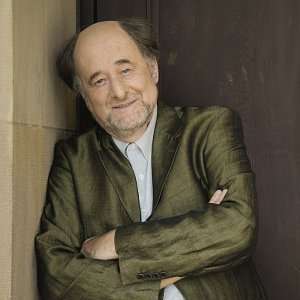|
Back
What makes English music sound English? Zurich
Tonhalle
02/10/2010 - & February 11*, 12, 2010
Edward Elgar: Serenade for Strings, opus 20 – Symphony No. 1, opus 55
Igor Stravinsky: Symphonies d’instruments à vent
Tonhalle-Orchester Zürich, Sir Roger Norrington (conductor)

R. Norrington (© Manfred Esser)
In a talk after the concert, a questioner asked what makes English music sound English. Sir Roger’s response was that Elgar evokes the English countryside in the same way as Constable and Turner depict it, but there is some uncertainty on the topic. It is easier to grasp why Sibelius evokes dark gloomy landscapes, or to hear other composers blending into their compositions folk tunes of their native country to make music sound, for example, Czech.
The Tonhalle orchestra did not however find it difficult to evoke the Worcestershire countryside in either of the two pieces by Elgar which gave this concert a very British flavour. As Nigel Downing, a British horn player who has been with the orchestra for many years, put it, “we just play the notes”!
Elgar was a string player of considerable ability. His Serenade for Strings is a simpler work than his Introduction and Allegro for Strings and is his earliest work to have become popular. The opening movement is marked piacevole (pleasing) and pleasingly played it was, with no meddling from the conductor. It almost displayed certain shyness; some may have felt it played a mite too slow. The Larghetto fared better, where again the naturally slow tempo gave the movement a somewhat elegiac feel. The Allegretto was played delightfully and even with Norrington’s instructions to omit all vibrato (it was not used when the work was composed) the strings of the Tonhalle sounded rich and firm.
The strings left the stage, on came the woodwind and brass for a change of scene. Stravinsky’s Symphony for Wind Instruments is not, in fact, a symphony at all but a form for abstract instrumental works. The work typifies Stravinsky’s “Russian” phase but also foreshadows his neoclassical idioms. The work is not classic Norrington territory and he did not appear to be at home in the angular modernity of the work, too much Worcestershire, not enough Siberia. It lacked volume and rawness, even if the playing was flawless.
Sir Roger addressed the audience at some length before the main work, Elgar’s First Symphony. Elgar had his champions, notably Hans Richter and Gustav Mahler. It is now hard to imagine that the work, premiered in the same year as Mahler’s First Symphony, was at the cutting edge of the avant-garde of the time. Norrington confided it was one of his favourite pieces and explained its construction, based around a motto theme which recurs constantly throughout the symphony. Each time it emerged, Norrington turned to the audience and grinned. In fact he grinned through most of the work, it is clearly dear to his heart and his deep knowledge of its structure came over and convinced in performance.
The opening Andante, nobilmente e semplice was full of dynamic shading and its buoyant first subject was athletically depicted. In the Allegro, the scampering strings stirred the blood, before relaxing into the short interlude which Elgar told the orchestra was “like something you hear down the river”. The Adagio was beautifully played, perhaps depicting the warmth of an English summer afternoon. And finally, the Allegro molto erupted into a final festive tumult, which Norrington described as fireworks, and which clearly delighted both orchestral players and audience alike.
John Rhodes
|